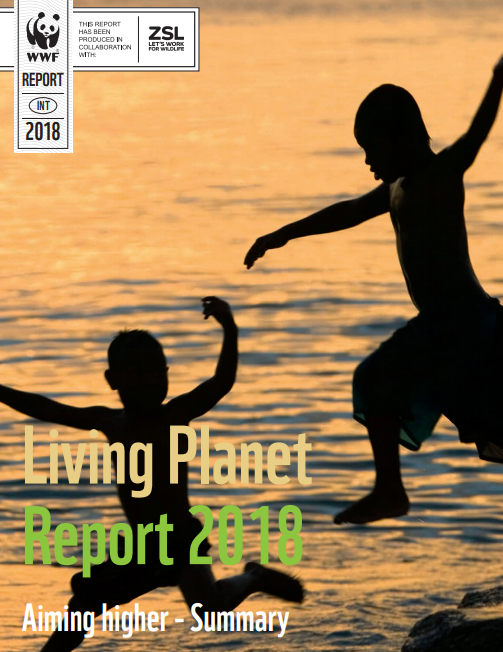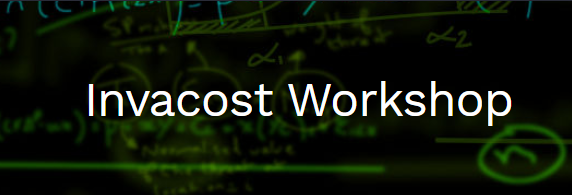
@AlienScenarios
franz.essl@univie.ac.at
guillaume.latombe@univie.ac.at
| Having trouble viewing this email? View it in your browser, or get it as a pdf. |
 |
https://alien-scenarios.org @AlienScenarios franz.essl@univie.ac.at guillaume.latombe@univie.ac.at |
Good day! |
New article (and blog post): Lenzner et al. (2019) A Framework for Global Twenty-First Century Scenarios and Models of Biological Invasions, BioScience, 69(9):697-710 |
In this article published in BioScience, Lenzner and colleagues present a conceptual framework for developing scenarios of alien species spread and impact for the twenty-first century and how to identify relevant steps and challenges along the way. This is an important element for AlienScenarios, as it will underpin the work of all the different work packages. You can access the article here. And click here for the post on the IIASA research blog, presenting a more personal story behind the article! |
 |
Contribution to the upcoming 2020 edition of the WWF's Living Planet Report |
 |
AlienScenarios will contribute to a chapter of the upcoming 2020 Living Planet Report called 'Imagining the future', which will feature the role of models and scenarios and is led by IIASA. This is a great opportunity to contribute to this comprehensive study of trends in global biodiversity, to show how recent scientific advances now allows us to make projections and implement models exploring how humans may shape the future of biodiversity.
|
Collaboration with the InvasiBES project |
| We are pleased to develop a formal collaboration with InvasiBES, another project funded by the joint Belmont Forum - BiodivERsA call for proposals on biodiversity scenarios, to develop future scenarios for invasions and their management and to assess the consequences of different levels of implementation of the European Union Regulation on invasive alien species. A joint workshop enabling to establish strong synergies will take place in Girona, Spain, in April 2020.
|
 |
The AlienScenarios toolbox of drivers of biological invasions |
 |
A toolbox listing the main global drivers of biological invasions and related open-source datasets is being constructed, which will underpin all scenarios designed in AlienScenarios. This toolbox is being used to explore how countries are distributed with respect to these drivers, and better understand how the current status quo may change in the future and the implications for biological invasions. Preliminary results using this toolbox have been presented as a poster at the 2019 EMAPi conference in Prague.
|
Upcoming InvaCOST workshop |
|
Franck Courchamp, the leader of the Work Package 3 of AlienScenarios, is organising a workshop on the economic cost of biological invasions, to make the best use of InvaCost, the first global, comprehensive database on published economic costs of biological invasions. The workshop will take place at the Saint Paul Domain close to Paris, France, on November 12th-15th. Details on the workshop can be found here. You can contact Franck for more details. |
 |
AlienScenarios early career researchers in the spotlight |
In each issue of the Newsletter, we will highlight two early career researchers part of the AlienScenarios team. For this second issue, meet Marina and Guillaume! |
| Marina Golivets I am a postdoc with the Macroecology research group at the Helmholtz Centre for Environmental Research - UFZ, Germany. Previously, I was affiliated with the University of Vermont, USA, where I did my PhD in Natural Resources. I consider myself a plant and invasion ecologist with a background in ecology, forestry and horticulture and a strong focus on quantitative data synthesis. My main research interests include plant competition, multispecies invasions in forest ecosystems, and scale-dependency in the drivers of plant invasion. Together with Ingolf Kühn and Sonja Knapp, I am involved in the AlienScenarios WP5 - Scenarios of alien species traits related to impact in selected regions. By modelling trait-environment relationships, we aim to reveal how regional-scale alien species trait distributions may change under plausible future scenarios for biological invasions and to identify areas most vulnerable to the impact of alien species in the future based on trait information. In my free time, I enjoy discovering nature through observation and reading and escaping to attend to my garden in Ukraine whenever I can. If I were a song, I would be Depeche Mode's Enjoy the Silence If I were a painting, I would be Flowers in Blue Jar, by Kateryna Bilokur If I were a fictional character, I would be the Little Prince If I were an alien species, I would be Impatiens glandulifera |
 |
 |
Guillaume Latombe I am a postdoc in the Division of Conservation Biology, Vegetation Ecology and Lanscape Ecology at the University of Vienna, Austria. I am French, and I have spent almost half of my life abroad, living on four continents. Originally trained as an engineer, I responded to the call of nature when I was studying primate cognition in Barcelona after a Masters in machine learning in Montreal, and decided to do a Ph.D. on the modelling of animal movements in Canada. I now use a combination of data analysis, simulation modelling, and conceptual approaches to study invasion science and community ecology from a holistic and systemic perspective. After two postdocs in Australia and South Africa, I am now part of WP1 (global storylines and scenarios) and WP7 (synthesis, communication and outreach) of AlienScenarios. In my free time, I like to stay active, by practicing martial arts, rock climbing, yoga, and exploring nature. If I were a song, I would be Highway to Hell, by AC/DC. If I were a painting, I would be The Starry Night, by Vincent van Gogh. If I were a fictional character, I would be Spiderman. If I were an alien species, I would be the Aldabara Tortoise (ok, I cheated a bit on this one :o). |
 | 
|
|
Contact Us Visit us on the web at https:\\alien-scenarios.org |
If you no longer want to receive our emails, you can un-subscribe here. |